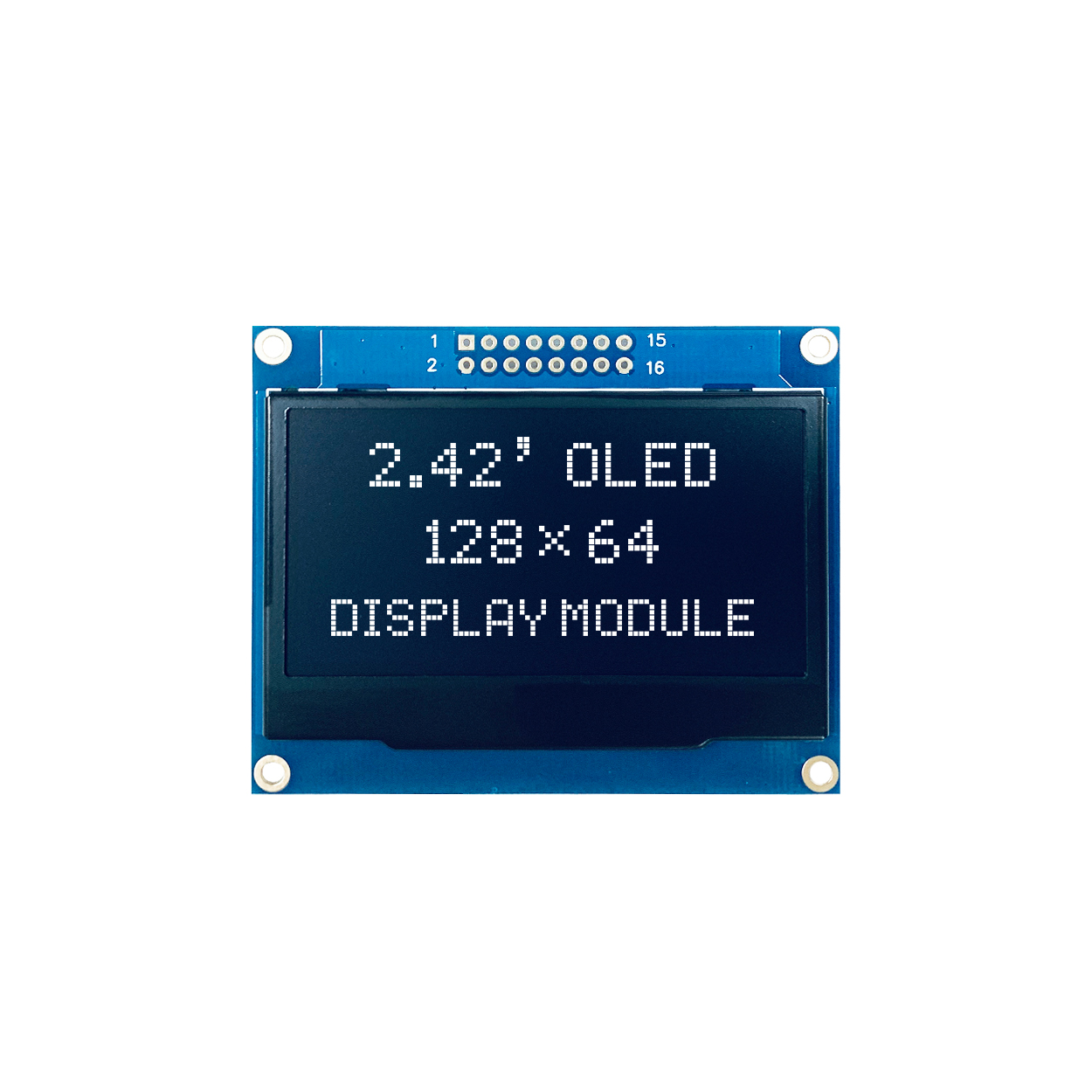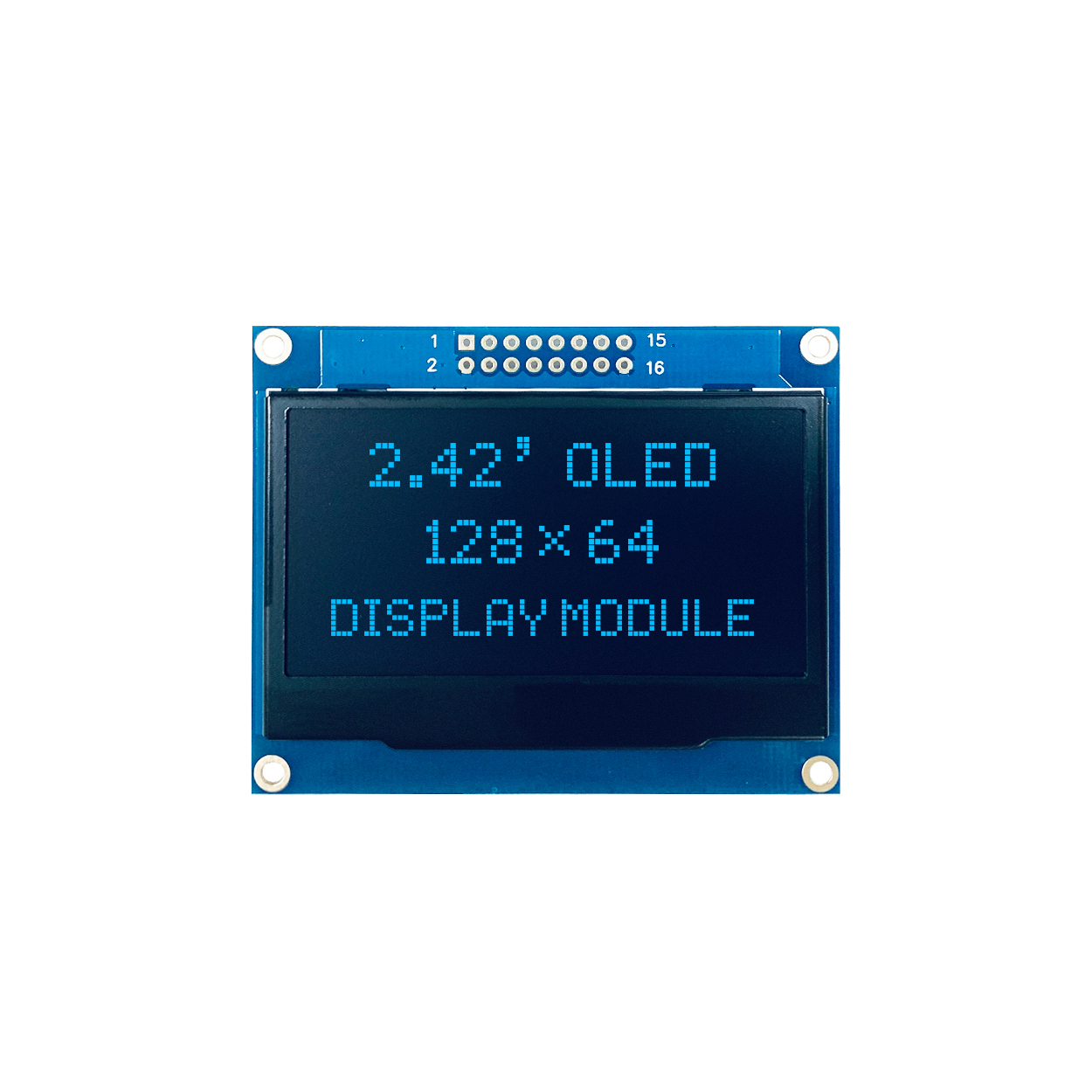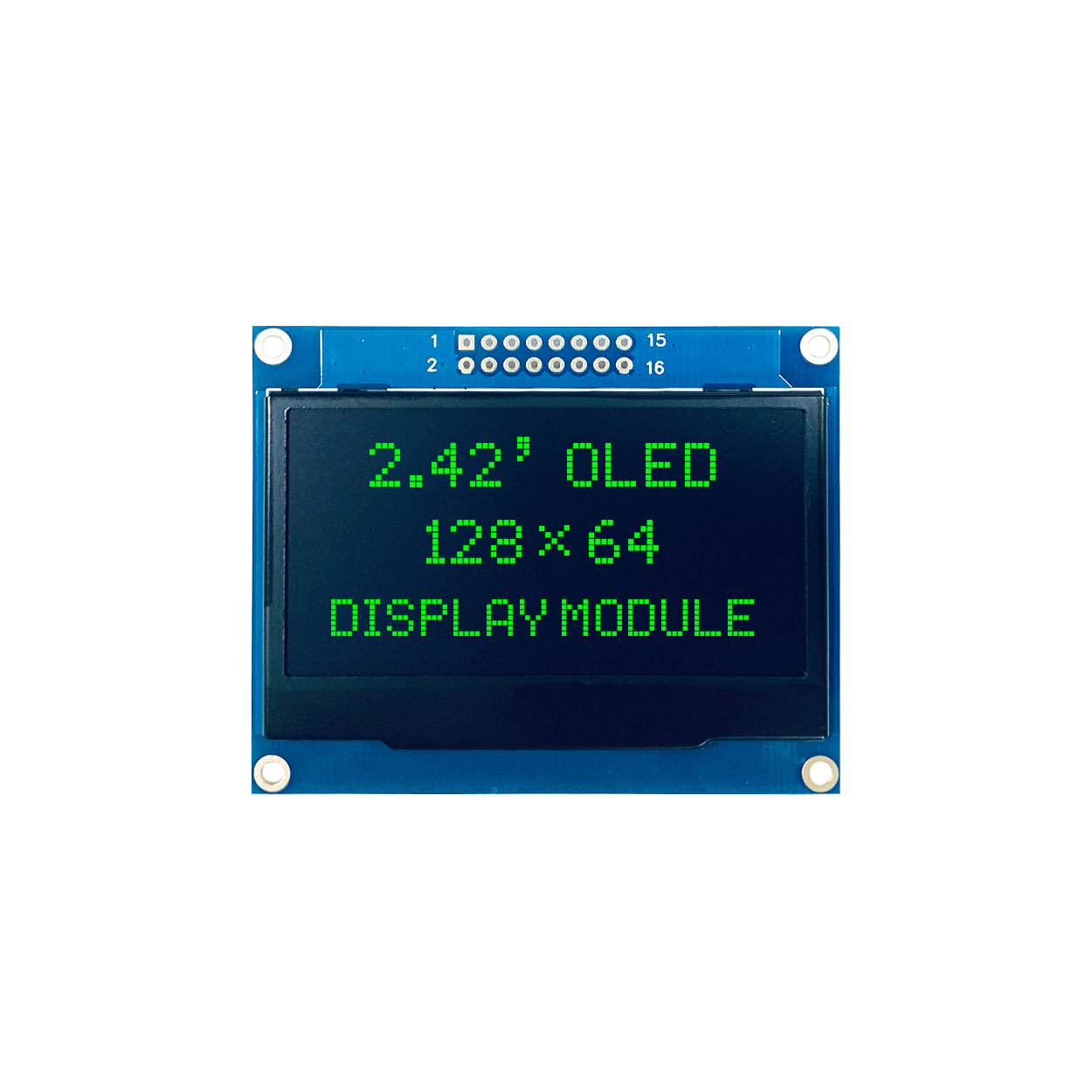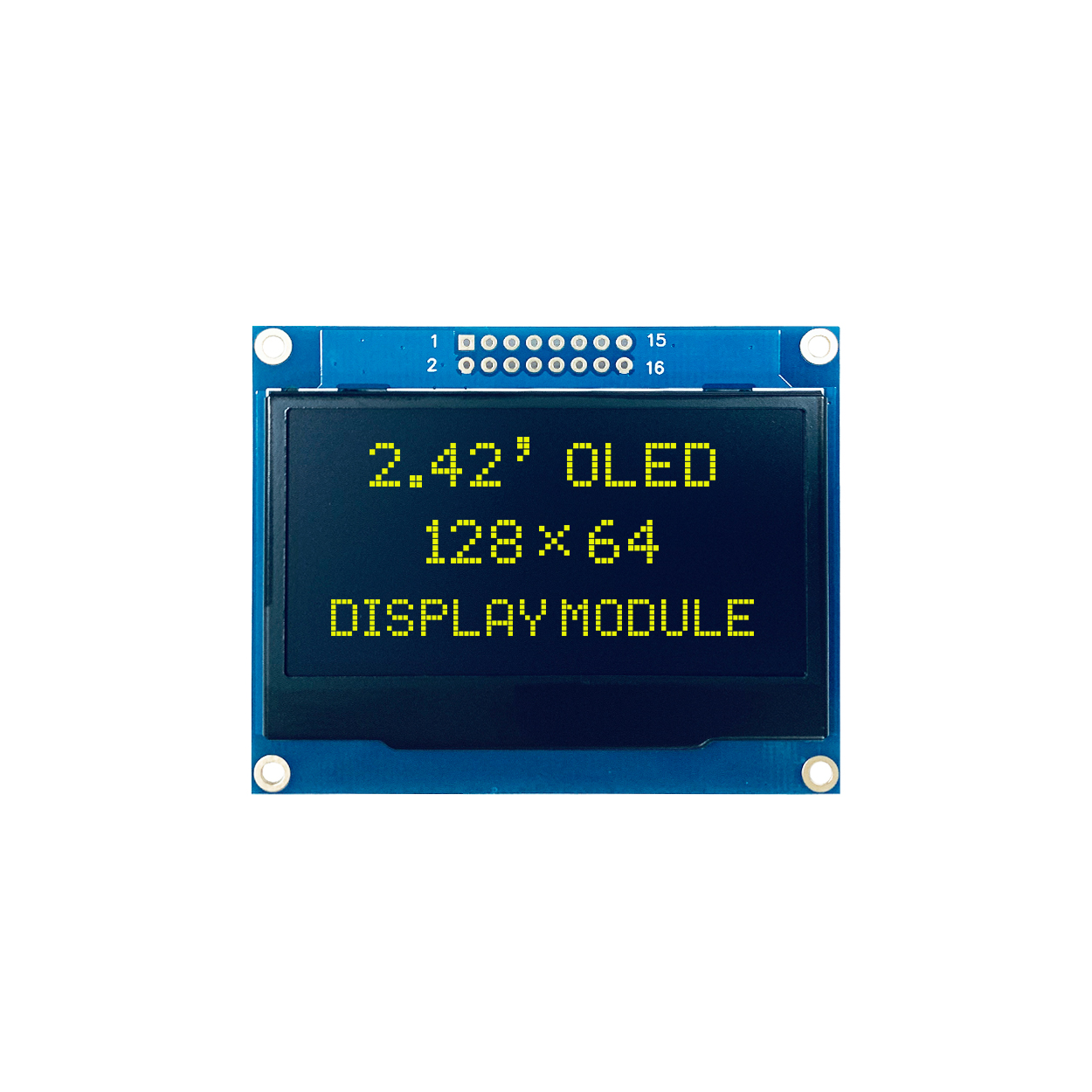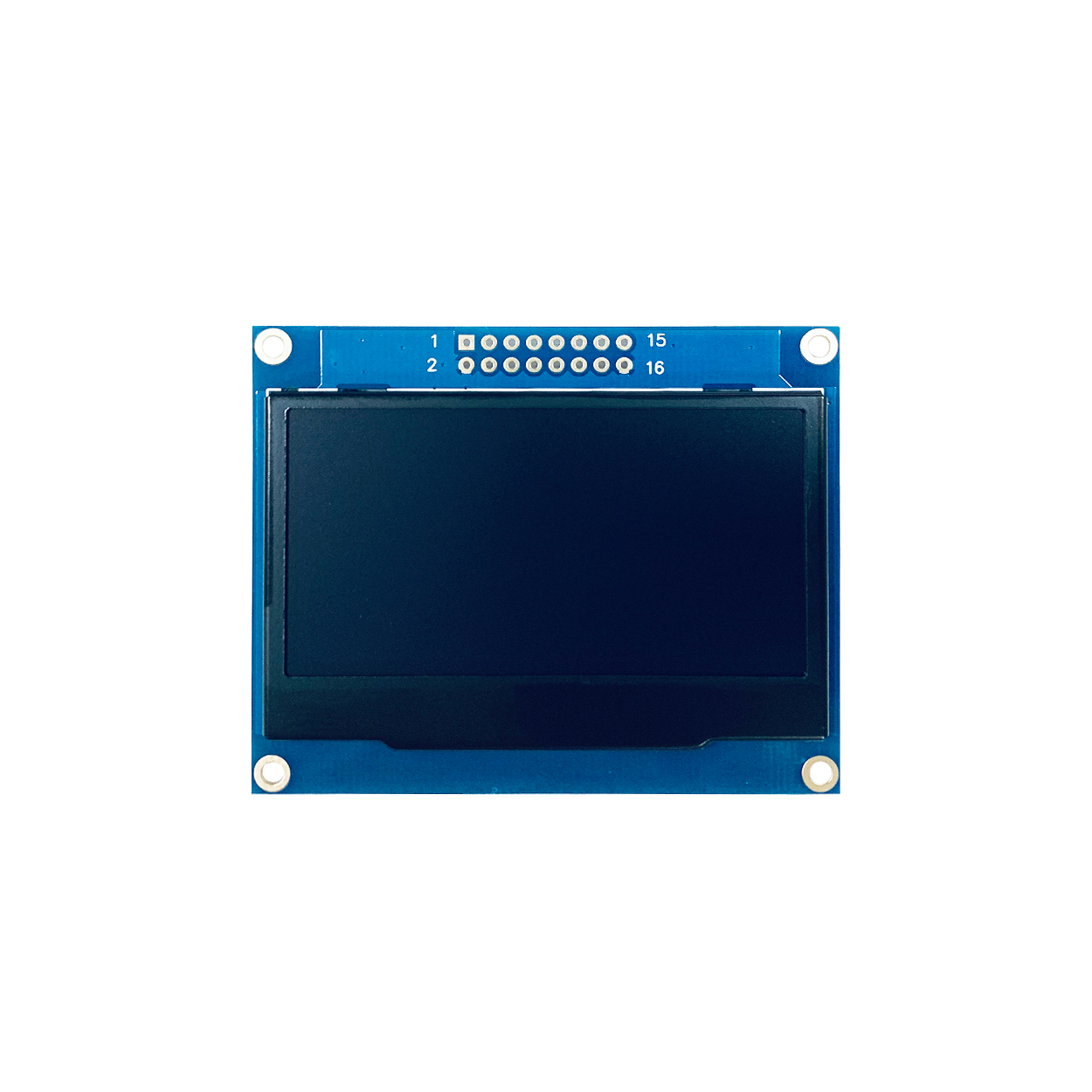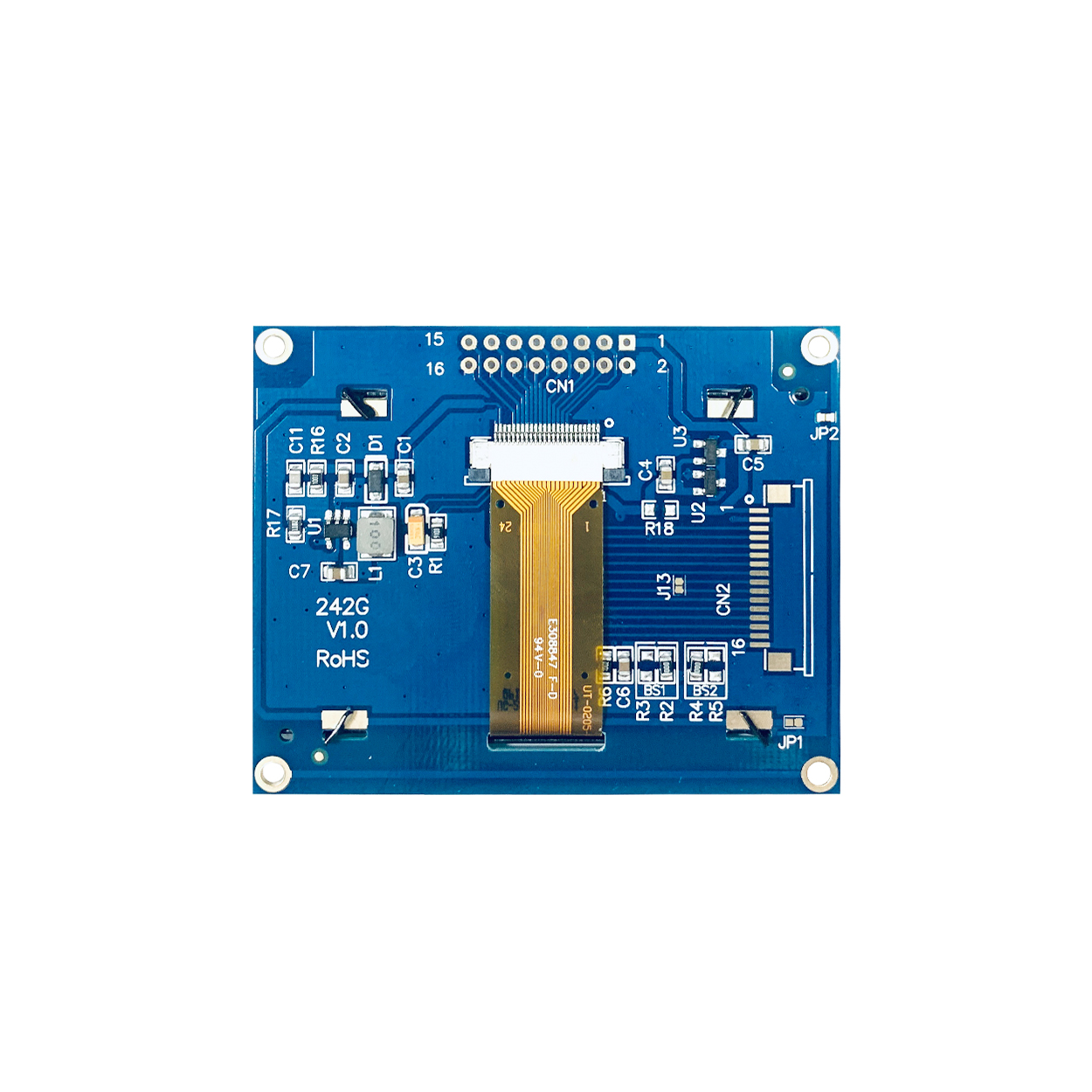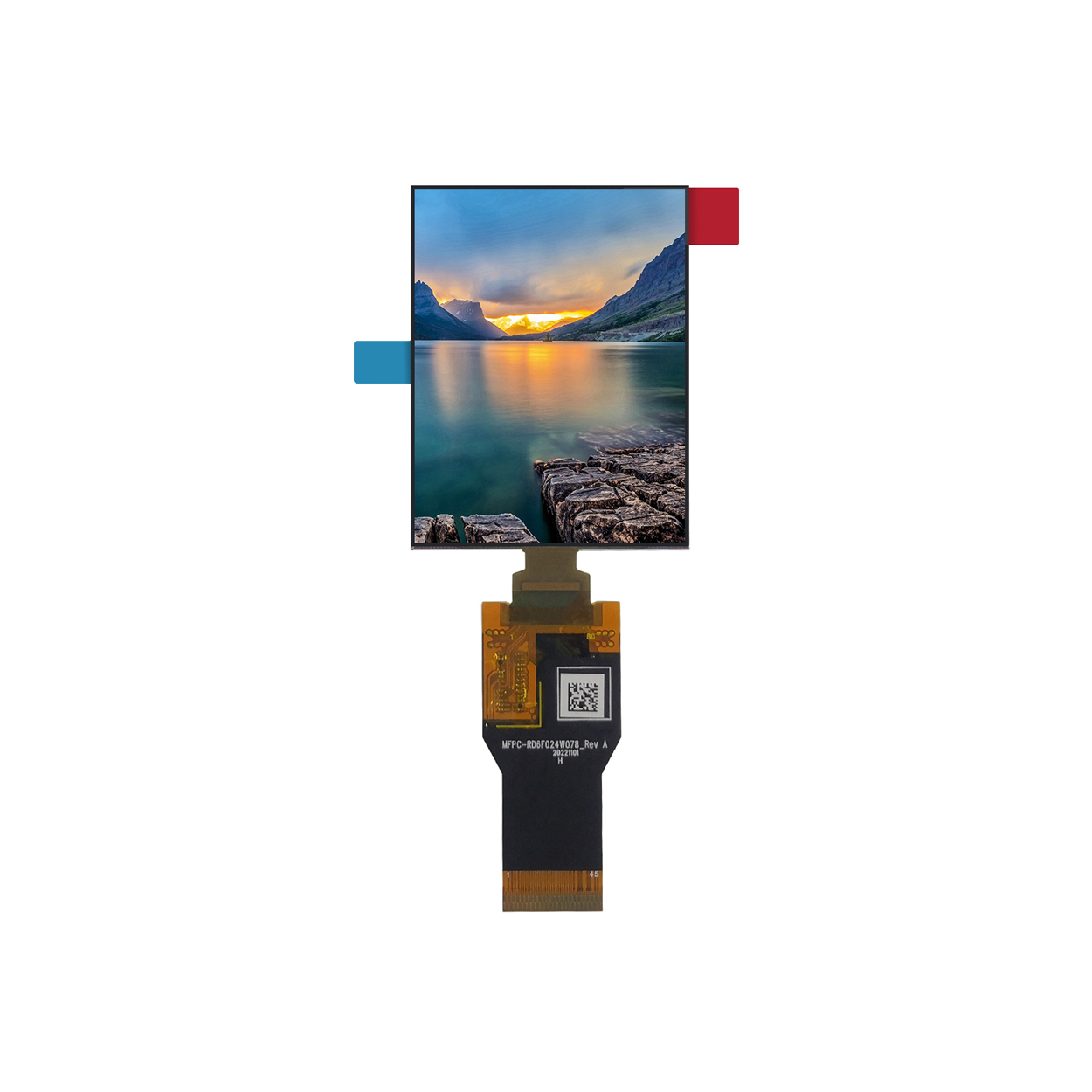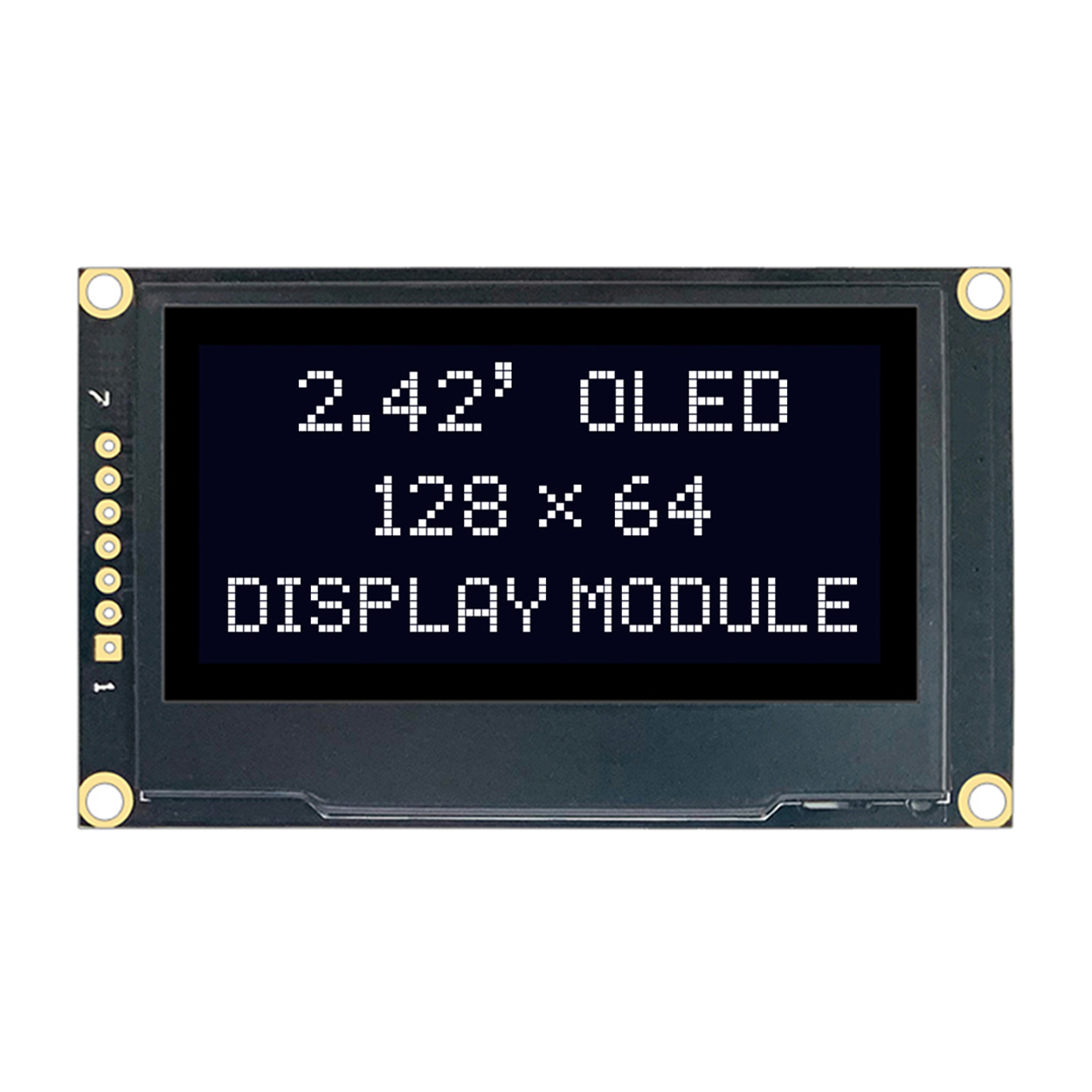
2.42″ 128X64 OLED Display Module SSD1309 SPI IIC LCD Screen
A Comprehensive Overview of the 2.42" 128x64 OLED Display Module
The 2.42″ 128×64 OLED Display Module, equipped with the SSD1309 driver IC, is a versatile display solution, offering a monochrome output with impressive resolution. This module is typically used in embedded systems and electronic projects requiring compact, high-contrast displays. It supports various communication interfaces, including IIC, SPI, and parallel ports, and operates with a passive matrix configuration, which contributes to its simplicity and efficiency. The module is designed for both aesthetic and functional applications in diverse fields like wearable technology, IoT devices, and digital instruments.
Key Features of the 2.42" 128x64 OLED Display Module
Display-Spezifikationen
The module boasts a resolution of 128×64 pixels, allowing for clear text and graphical representations in monochrome. This makes it an ideal choice for projects where space is limited but visibility is critical. With a pixel pitch of 0.43 mm, the display ensures fine detail and crisp imaging.
Display Modes and Color Options
The 2.42″ OLED display operates with a passive matrix configuration, meaning it relies on the inherent properties of the OLED material to light up pixels as needed. The module offers several color choices including white, blue, yellow, and green, providing flexibility in both aesthetic design and functional clarity. These colors contrast well against the dark background, enhancing readability under various lighting conditions.
Schnittstellen- und Kommunikationsprotokolle
This OLED display module offers multiple interfaces to suit various design preferences. The common options include:
- IIC (Inter-Integrated Circuit): A two-wire communication protocol that allows for simple, low-power connectivity between the module and a microcontroller or processor.
- SPI (Serielle Peripherieschnittstelle): A more robust, high-speed communication option that supports faster data transfer for complex displays.
- Parallel Interfaces (8080/6800): These are used for direct, high-performance connections to the microcontroller, supporting faster updates and more complex display handling.
With 16 pins, the module ensures flexible integration into different system designs, while the adjustable interface options make it suitable for a wide range of applications, from low-power devices to high-performance systems.
Structural Design and Dimensions
The module has a compact form factor, with dimensions measuring 66.0 mm in length, 53.0 mm in width, and a maximum height of 5.9 mm. Despite its small footprint, the display area spans 57.01 mm x 29.5 mm, with an effective visible area of 55.01 mm x 27.49 mm. The small dot size of 0.39 x 0.39 mm and dot pitch of 0.43 x 0.43 mm enable a high pixel density, ensuring sharp images and text on the display.
Module Size and Viewing Area
The compact size of the module allows it to be easily integrated into small electronic devices. The effective viewing area of 55.01 mm x 27.49 mm ensures a sufficient screen space for text, graphics, or interface elements while maintaining a minimalistic design. This balance between size and functionality makes it ideal for a wide range of applications, from handheld gadgets to industrial control panels.
Electrical Characteristics and Performance
The 2.42″ OLED Display operates with a duty cycle of 1/64, which ensures efficient power consumption while maintaining a high contrast ratio for sharp images. The SSD1309 driver IC is a key component, offering an efficient way to manage the display’s power usage, lifespan, and performance. The passive matrix structure supports a good balance between performance and power consumption, particularly important for battery-powered devices.
Energieaufnahme
One of the standout features of OLED displays is their low power consumption, as each pixel is independently lit and can be turned off when not in use. This reduces the overall energy demand, making the 2.42″ OLED display an ideal choice for battery-operated projects or those requiring extended operational lifetimes.
Durability and Longevity
OLED technology also boasts a longer lifespan compared to traditional LCDs, with each pixel offering a greater number of operational hours. This enhances the overall durability of the 2.42″ module, making it suitable for long-term use in various devices.
Table: Key Specifications of the 2.42" 128x64 OLED Display Module
| Parameter | Spezifikation |
|---|---|
| Anzeigegröße | 2.42 inches |
| Auflösung | 128 x 64 pixels |
| Anzeigefarbe | White / Blue / Yellow / Green |
| Laufwerksleistung | 1/64 Pflicht |
| Treiber-IC | SSD1309 |
| Schnittstelle | IIC, SPI, 8080/6800 Parallel |
| Pin-Anzahl | 16 Pins |
| Modulabmessungen | 66.0L × 53.0W × 5.9H mm |
| Ansichtsbereich | 57,01 × 29,5 mm |
| Nutzfläche | 55,01 × 27,49 mm |
| Punktgröße | 0,39 × 0,39 mm |
| Punktabstand | 0,43 × 0,43 mm |
Anwendungen und Anwendungsfälle
The 2.42″ OLED Display Module is a powerful tool for a broad spectrum of applications, owing to its small size, high resolution, and versatile connectivity options. Below are a few typical use cases:
Tragbare Geräte
Given its low power consumption and clear display capabilities, this module is frequently used in wearable technology such as smartwatches, fitness trackers, and medical monitoring devices. The compact size and high visibility make it ideal for displaying essential information like time, heart rate, or step count.
IoT und eingebettete Systeme
For IoT applications, where space and power efficiency are paramount, this OLED module serves as an ideal solution. It can be used in sensors, smart home devices, or remote control panels, providing users with clear and intuitive interfaces.
Industrie- und Unterhaltungselektronik
In the industrial sector, the 2.42″ OLED module is often found in digital instruments, meters, and displays for controlling machinery or monitoring systems. It’s also commonly used in consumer electronics for providing user feedback or showing system status in compact devices.
Abschluss
The 2.42″ 128×64 OLED Display Module with the SSD1309 driver IC is a standout component in the world of embedded displays. With its sharp resolution, compact size, and energy-efficient operation, it is suited for a wide array of applications in various fields. Whether used in consumer electronics, IoT, or wearable technology, this module provides a reliable and visually clear solution for modern electronic devices.
Zeichnung
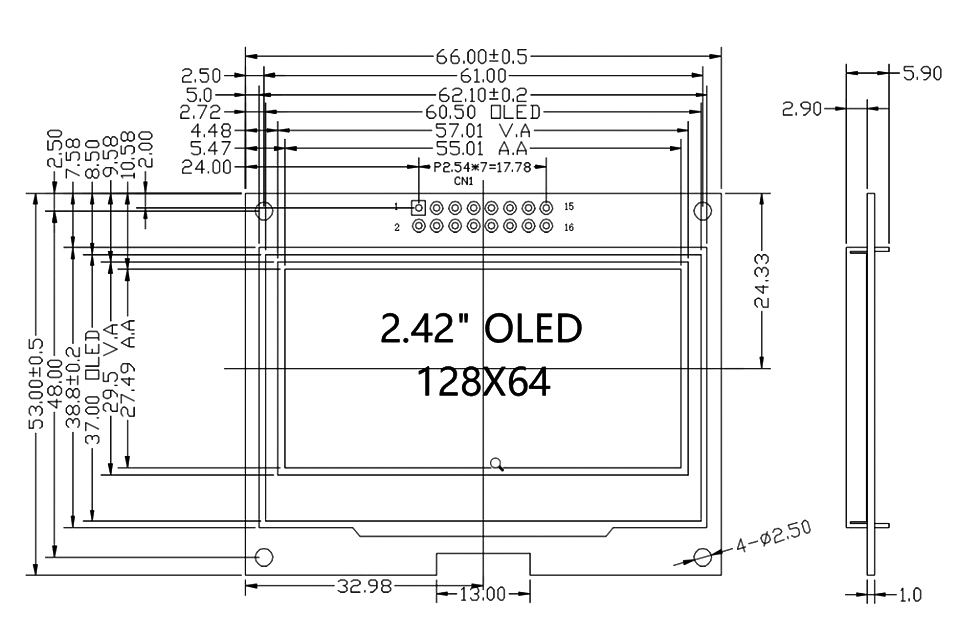
Pin Beschreibung
Parallel Interface(8080): (R18,R21- Use; R19,R20- No Use)
| ARTIKEL | SYMBOL | EBENE | FUNKTION |
|---|---|---|---|
| 1 | Masse | 0 V | Stromerdung |
| 2 | VDD | +3.3V ~ +5.0V | Stromversorgung für Logik |
| 3 | NC | – | Keine Verbindung |
| 4~11 | D0 bis D7 | H/L | Datenbus |
| 12 | RD | H/L | 8080: Aktives LOW-Lesesignal |
| 13 | WR | H/L | 8080: Aktives LOW-Schreibsignal |
| 14 | D/C(RS) | H/L | H: Daten L: Befehl |
| 15 | /RST | H/L | Aktives LOW Reset-Signal |
| 16 | /CS | M | Chipauswahl |
Parallel Interface(6800): (R18,R20- Use; R19,R21- N0 Use)
| ARTIKEL | SYMBOL | EBENE | FUNKTION |
|---|---|---|---|
| 1 | Masse | 0 V | Stromerdung |
| 2 | VDD | +3.3V~+5.0V | Stromversorgung für Logik |
| 3 | NC | – | Keine Verbindung |
| 4~11 | D0 bis D7 | H/L | Datenbus |
| 12 | RD | H/L | 6800: Operation enable signal. Falling edge triggered. |
| 13 | WR | H/L | 6800: Read/Write select signal, R/W=1: Read, R/W=0: Write |
| 14 | D/C(RS) | H/L | H: Daten, L: Befehl |
| 15 | /RST | H/L | Aktives LOW Reset-Signal |
| 16 | /CS | M | Chipauswahl |
4-SPI: (R19,R21- Use; R18,R20- No Use)
| ARTIKEL | SYMBOL | EBENE | FUNKTION |
|---|---|---|---|
| 1 | Masse | 0 V | Stromerdung |
| 2 | VDD | +3,3 bis +5,0 V | Stromversorgung für Logik |
| 3 | NC | – | Keine Verbindung |
| 4 | SCLK(D0) | H/L | Serielles Taktsignal |
| 5 | SDIN(D1) | H/L | Serielles Dateneingangssignal |
| 6 | Nicht bestimmungsgemäß (D2) | – | Keine Verbindung |
| 7~11 | D3 bis D7 | 0 V | Stromerdung |
| 12 | RD | 0 V | Stromerdung |
| 13 | WR | 0 V | Stromerdung |
| 14 | D/C(RS) | H/L | H: Daten L: Befehl |
| 15 | /RST | H/L | Aktives LOW Reset-Signal |
| 16 | /CS | M | Chipauswahl |
I2C-Schnittstelle: (VERWENDUNG: R5, R7, 3SPI = 0Ω; KEINE VERWENDUNG: 4SPI)
| Pin-Nr | SYMBOL | EBENE | FUNKTION |
|---|---|---|---|
| 1 | VSS | 0 V | Stromerdung |
| 2 | VDD | +3,3 V bis 5 V | Stromversorgung für Logik |
| 3 | SCLK | H/L | Serielles Taktsignal. |
| 4 | SDA | H/L | Serielles Dateneingangssignal |
| 5 | /RST | H/L | Aktives LOW-Reset-Signal. (R6=10K C6=0,1uF) |
| 6 | SA0 (D/C) | H/L | Signal zur Auswahl der Slave-Adresse |
| 7 | NC | – | Keine Verbindung (R7=0R) |
Warum uns wählen
Wissensdatenbank
Die Technologie entwickelt sich in einem unglaublichen Tempo. Um an der Spitze zu bleiben, ist kontinuierliches Lernen und Aufgeschlossenheit erforderlich. Durch die kontinuierliche Erweiterung unseres Wissens stellen wir sicher, dass wir in unserem Bereich führend bleiben.
Erkunden Sie mit uns die neuesten Trends und Erkenntnisse und nutzen Sie die Gelegenheit, Ihr Verständnis der LCD-Technologie aufzufrischen und zu vertiefen!
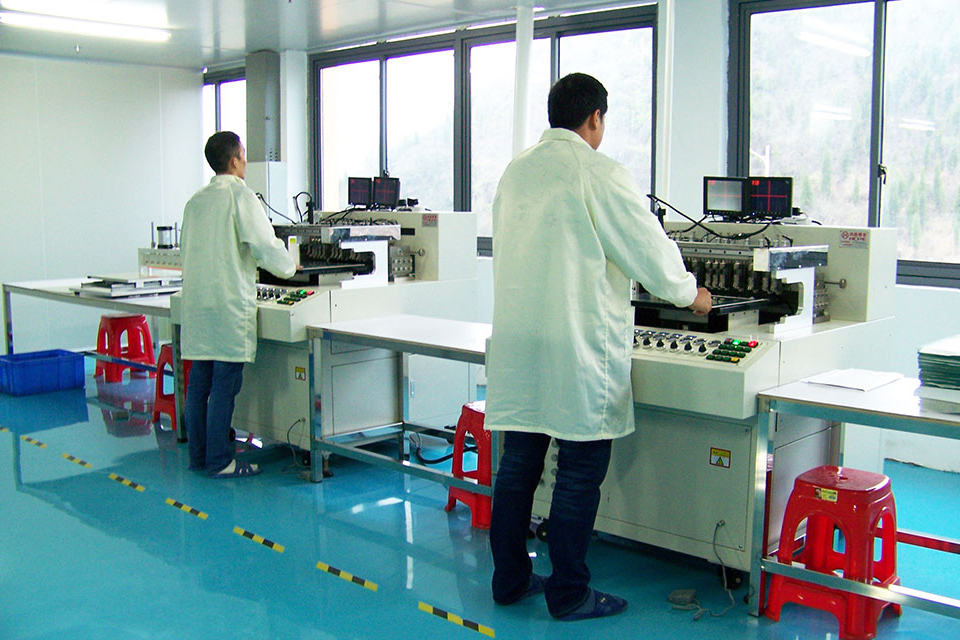
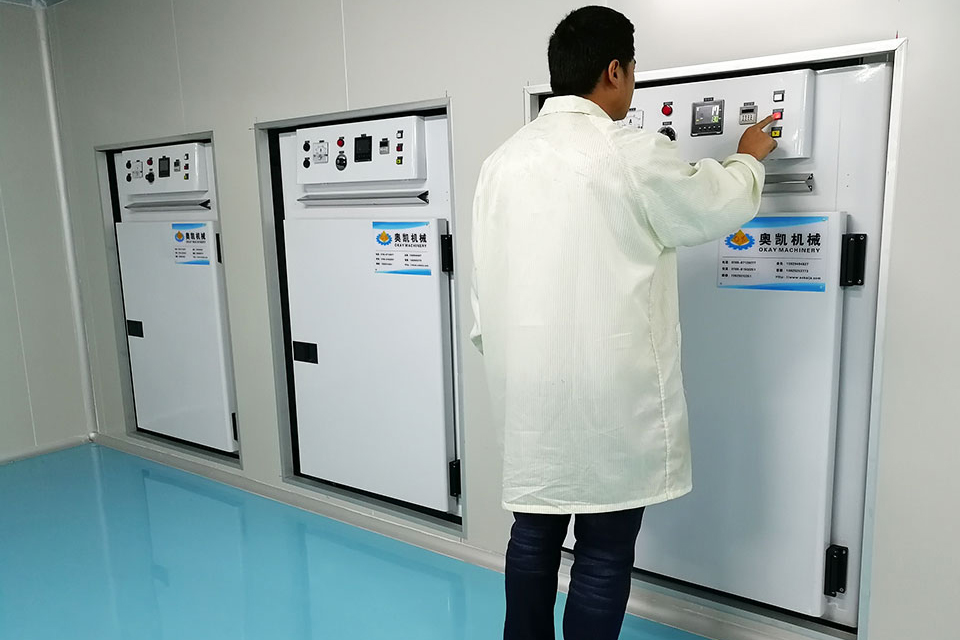
Unsere Grundwerte und Mission
Wir möchten der führende Anbieter von LCD-Lösungen sein, indem wir hochwertige Produkte, außergewöhnlichen Kundenservice und vertrauensvolle Geschäftsbeziehungen liefern. Wenn Sie mit uns zusammenarbeiten, sind Sie nicht nur ein Kunde – Sie werden Teil unserer Familie.
Ihre Anforderungen haben für uns Priorität und wir setzen alles daran, Ihren Erfolg auf jedem Schritt Ihres Weges sicherzustellen.
Unser Produktangebot
Ob es sich um unsere Standardangebote oder eine kundenspezifische Lösung handelt, Qualität hat für uns immer oberste Priorität. Wir optimieren unsere Prozesse ständig, um die beste Kombination aus wettbewerbsfähigen Preisen und pünktlicher Lieferung zu bieten. Unser Ziel ist es, außergewöhnlichen Wert zu bieten und gleichzeitig Ihre spezifischen Anforderungen zu erfüllen.
Entdecken Sie noch heute unsere Produktpalette und erfahren Sie, wie wir Sie bei Ihrem nächsten Projekt unterstützen können!
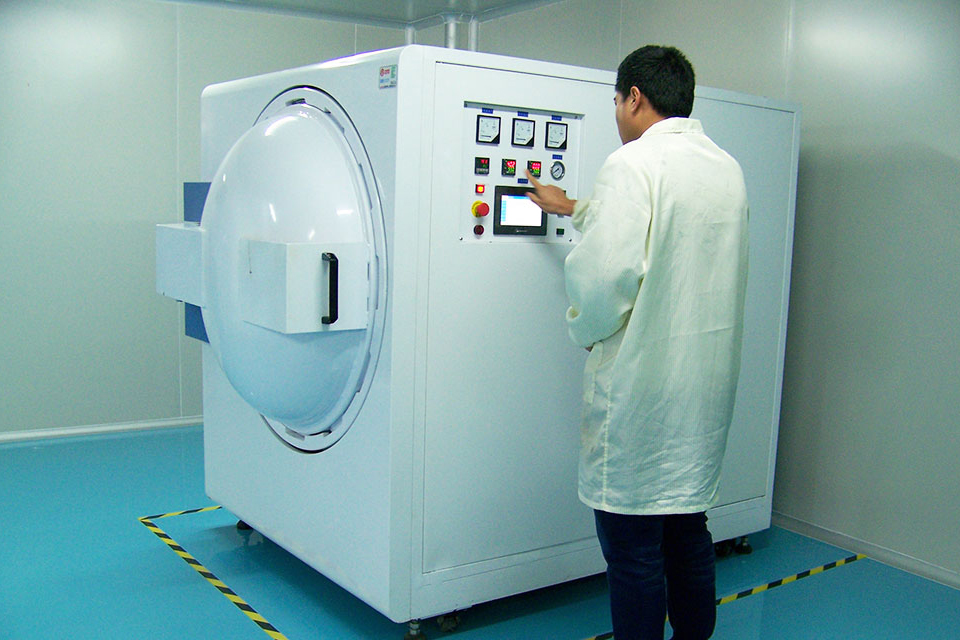
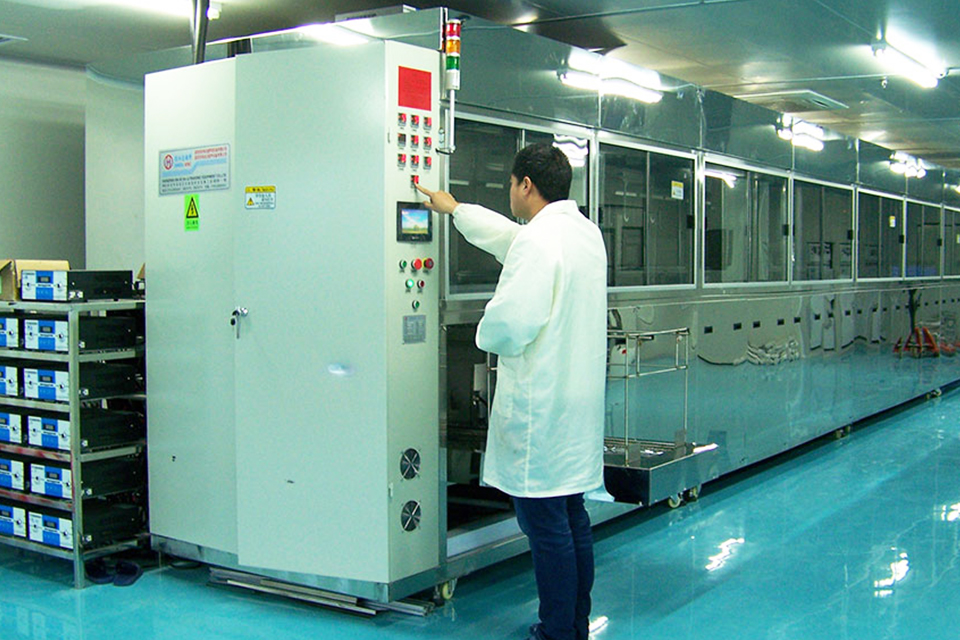
Weltweiter Kundensupport
Wir sind ein Full-Service-Hersteller und Lieferant von LCD-Lösungen und haben uns auf eine breite Palette elektronischer Produkte spezialisiert. Unser Fachwissen umfasst Farb-TFT-Displays, eingebettete LCDs, Touchpanels, LCD-Heizungen, Hintergrundbeleuchtungen sowie sowohl Zeichen- als auch Grafik-LCDs.
Bereitstellung umfassender Lösungen zur Erfüllung vielfältiger Branchenanforderungen. Kommen Sie mit, während wir die neuesten Trends und Erkenntnisse entdecken.
Häufig gestellte Fragen
The 2.42″ OLED Display Module has a resolution of 128×64 pixels, providing clear text and graphics.
The module offers monochrome color options, including white, blue, yellow, and green.
The module uses the SSD1309 driver IC for efficient display control and power management.
The display supports IIC (Inter-Integrated Circuit), SPI (Serial Peripheral Interface), and parallel interfaces (8080/6800), providing versatile connectivity options.
The viewing area of the OLED display is 57.01 mm x 29.5 mm, with an effective display area of 55.01 mm x 27.49 mm.
The module comes with 16 pins, allowing flexible integration into different system designs.
The OLED display operates with a 1/64 duty cycle, optimizing power consumption while maintaining high image contrast.
The dot pitch is 0.43 mm x 0.43 mm, ensuring sharp pixel density and fine detail for images and text.
The module is used in various applications including wearable devices, IoT systems, industrial control panels, and consumer electronics.
Due to its passive matrix OLED technology, the 2.42″ module has low power consumption, making it suitable for battery-powered devices and applications that require long operational lifetimes.

